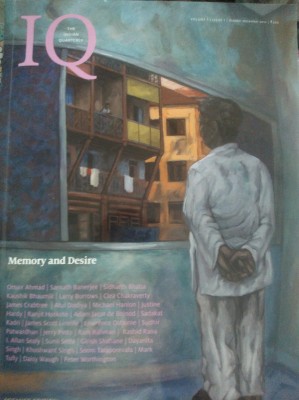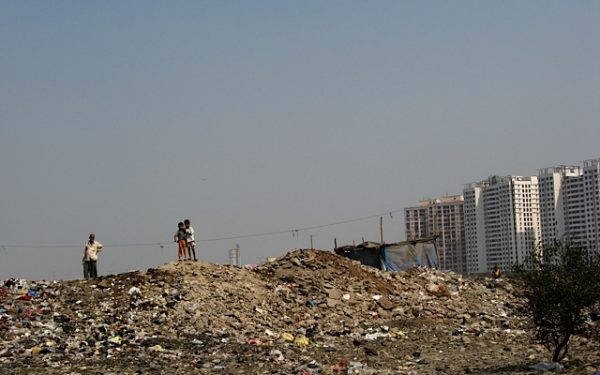Sprint rather than jog. Hop skip and jump like a child. Make your body your gym. Keep moving. Always take the stairs. Jonathan Foreman explains that your body will thank you for safeguarding it with Functional Fitness – which is not about looking good but training for your life
It is the latest buzzword in fitness. The successor to Zumba classes, powerplate, elliptical trainers, celebrity yoga tapes and all the other health and fitness fads that have crossed the Atlantic, conquered Europe and made their way East. Unlike its predecessors, Functional Fitness is not primarily about looking good. However, its advocates insist that their exercises will indeed give you an attractive as well as a strong, safe and useful body.
Indeed, like Corbusier, the architect who created Chandigarh and who believed that real beauty was a matter of efficient function, Functional Fitness advocates a belief that nothing is more beautiful than a body that does efficiently and painlessly what it was designed by nature to do.
The idea of Functional Fitness is that you are training for your life not for a marathon race or to be more attractive. You are safeguarding the only body you will ever have in this lifetime. You are maintaining and improving and preserving the temple in which your spirit resides.
One way you can assess your Functional Fitness is by asking yourself how comfortably and safely you could deal with ordinary physical challenges. Can you lift a box or a child without putting your back out? Can you put your bag in the overhead compartment on the plane without help? Does going upstairs wear you out and do you trust your strength and balance when you walk down steps? Can you sprint for a plane or enjoy vigorous sex without risking a heart attack?
A surprising number of gym-bunnies and regular runners are not actually fit in this sense. They may be able to pound a treadmill for hours on end, but when they sprint for a train or a bus they may collapse in agony, or they may put their back out taking a pot out of the oven. In other words, they look good but are not truly, functionally fit.
MUSCLE POWER
Functional Fitness is about natural and practical movements rather than artificial ones. Exercises for Functional Fitness generally involve several muscles or muscle groups working together and are designed to promote not just strength but also balance and flexibility.
Advocates of Functional Fitness point out that many of the movements that people do with weights or machines in the gym have no equivalent in real life. All that exercises like bicep curls prepare you to do is to lift more weights, they say. Moreover many if not most of the machines in the gym were designed for body-builders not ordinary people. Functional Fitness converts argue that there is little value – unless you are recovering from surgery or an injury – in using machines that exercise a muscle in isolation.
This may ignore questions of vanity. Many non-functional exercises will give you bigger muscles and burn off fat if you do them rigorously and often enough. But then the view of Functional Fitness advocates is that these “non-functional” exercises that you see so many people doing in the gym often cause injuries that result in people giving up the gym entirely and then getting really, really unfit and fat. It is an argument that is strengthened by the fact that much of the Functional Fitness concept has its origins in physiotherapy and rehabilitation.
Some Functional Fitness instructors actually eschew all weights and machines, believing that exercisers need to learn to control their own bodyweight first. (In the USA one of the leading proponents of bodyweight exercises is Mark Lauren, a former Special Forces soldier who wrote a book called You Are Your Own Gym.)
Of course, it could be argued that the ultimate bodyweight and body control exercise disciplines are dance, martial arts, Pilates, and yoga. The last, quite apart from its psychological and spiritual benefits, seems to be particularly effective as an antidote to the back, neck and shoulder stiffness caused by a sedentary or desk-bound lifestyle.
To the extent that they use any equipment at all, many Functional Fitness gurus prefer stability balls and wobble boards and other devices that force their clients to engage the core muscles of their abdomen and back.
Others use traditional gymnastic equivalents like climbing ropes, Olympic rings and the monkey bars found in children’s’ playgrounds. For instance, the legendary ‘Gym Jones’ training team of Salt Lake City that turned the cast of the film 300 into convincingly rippling Spartan warriors – and global pin-ups – used all these old-fashioned tools and also odd objects like tractor tyres and rubber bands to torture their clients into picture perfect shape.
‘BOOT CAMP’ PROGRAMMES
Many devotees of Functional Fitness have come to it through military-style ‘boot camp’ fitness programmes that have become so popular in the US and UK over the last decade or so. These days it’s hard to go to a big urban park in either country without seeing people doing jumping jacks, burpees or sit-ups under the watchful eye of a civilian drill instructor.
Another fitness movement that is often included under the rubric of Functional Exercise is CrossFit. (The workout in the ‘Sport of Fitness’ Reebok ads currently shown on Indian movie screens is a CrossFit based one). It is fearsome stuff involving calisthenics, weights, and gymnastic equipment like rings. If you watch CrossFit videos you will see small slight women hoisting improbably heavy barbells above their heads, though its leaders say that its workouts all involve ‘movements that mimic motor recruitment patterns that are found in everyday life! Squats for example mimic sitting down and getting up from a chair. Deadlifts make practitioners less likely to hurt themselves picking up dropped keys or a crying child.
CrossFit gyms around the world get a ‘Workout of the day’ from the company’s headquarters. The movement’s practitioners around the world can be so devoted that some have likened it to a quasi-cult. There is also a big overlap of CrossFit devotees and believers in ‘Paleo’ or ‘Neanderthal’ diets who restrict what they eat to the ‘wild’ protein-rich foods that would have been preferred by our pre-agricultural caveman ancestors.
BACK TO NATURE
There is also Primal Fitness or Wild Fitness, an originally French philosophy of fitness that emphasises running around in nature in the way of our hunter-gatherer ancestors. Scientists have discovered that our ancient ancestors were taller and stronger than their agricultural descendants – and us – and that discovery has propelled fitness coaches to get their clients running and jumping around in the woods, picking up stones, and swinging from tree branches.
Tim Ferris, the author of the bestseller Four Hour Body, came to Functional Fitness through a quest to heal a number of persistent physical problems including immobile shoulders and a perpetually sore lower back. He became a devotee of moves like the ‘Turkish Get-Up’ and various exercises designed to open up an upper body that had been warped by too much time over a computer.
For many ordinary people, the great appeal of Functional Fitness-inspired training is that it is so much less boring and time consuming than conventional workouts. You don’t endlessly repeat the same tedious movements. You sprint rather than jog for hours. You get to jump, roll and skip like a child. You lift heavy objects a handful of times, then stop.
MOVE YOUR BODIES
The one thing that all forms of Functional Fitness have in common is the way they use whole body movements, rather than exercises that test and develop a single muscle. Whole body movements like squats and push-ups exercise small supporting muscles as well as big, limb-moving ones. It is the small supportive muscles that often give out first, causing back, shoulder and leg injuries, so it is important to exercise them. The other great advantage of these multiple muscle, full-body exercises is that they use many more calories and burn up much more fat in a shorter space of time. They also tend to provoke a strong endocrine response in the body, prompting your brain to release the hormones that simultaneously build muscle and burn fat.
Unlike old-fashioned trainers, physical training instructors who espouse Functional Fitness will often give their clients guidance on how to behave and move their bodies when they are not in the gym. (For instance, some advise you to brush your teeth standing on one leg.) The idea is that even the best workouts cannot make up for bad posture at your desk and in your normal life.
THE NEXT BIG THING
Whether Functional Fitness will become the next big thing in India the way it has in countries like Australia, the UK and the US depends on several things. One factor is the degree to which Functional Fitness has become fashionable in American universities. That is because most fitness fads make their way to Delhi and Mumbai not through scientific studies or professional athletics but via students and graduates recently returned from US campuses. (A lot of our Zumba, Pilates and even yoga instructors are just kids who enjoyed going to the gym in America and found that you don’t need any formal training or qualifications to set up as a coach in the subcontinent.) While Functional Fitness classes and programmes are undoubtedly the next big thing in New York, LA and London gyms patronised by adults and amateur athletes, their very grown-upness and seriousness makes them less appealing to college kids, especially those who see the gym as primarily a place to socialise, show off smooth skin and young, flexible limbs. This may limit its reach here.
Some of the lifestyle prescriptions of Functional Fitness gurus may also be difficult for Indians to follow, for the same social and cultural reasons that make many Indians so predisposed to unfitness, obesity, diabetes and other afflictions of a sedentary, servant-assisted life.
After all, one reason, according to the Functional Fitness advocates, that so many Americans and Europeans need to take regular vigorous exercise is that labour-saving devices have made them weak and lazy. Only two or three decades ago people did not press a button to open a car window but used elbow grease. For that matter they also did without power steering. Turning a window lever burns only a handful of calories and exercises the arms and shoulders only briefly, but if you multiply that handful by 300 or more days a year, you end up with 1000s, and the equivalent of several pounds of weight or inches around the waistline.
In India, daily life for many tends to be even less calorically demanding and physically rigorous than it is for people in the First World. But while Indians may not have every labour-saving machine found in Western homes, by and large, they have in their place labour-saving human helpers. How do you keep fit if you don’t even have to stand up from your chair to get a cup of tea or a glass of water from the kitchen, or a cappucino from the café?
It is hardly rocket science that if more people were willing to take the stairs instead of the lift and escalator, if they walked short distances instead of taking a car, if they even did the kind of every day housework or gardening that many prosperous Westerners do for themselves, they would not need to worry so much about heart disease, sore backs or pot bellies.
In the meantime though, it could be worth looking for a trainer or a class steeped in functional fitness. Your body will thank you for it.


